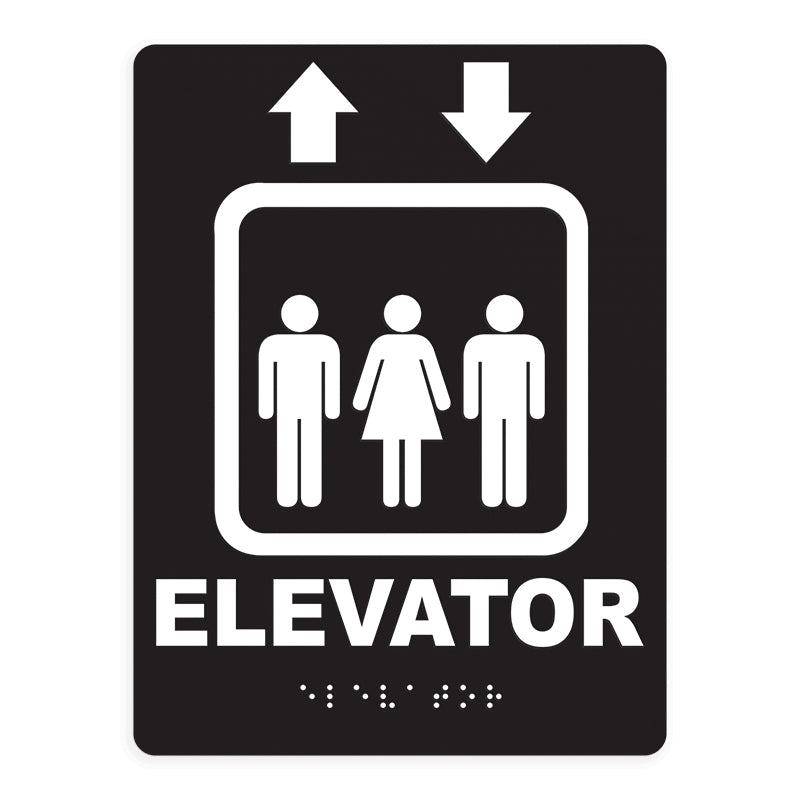A Comprehensive Overview to Selecting the Right ADA Signs
A Comprehensive Overview to Selecting the Right ADA Signs
Blog Article
Checking Out the Key Attributes of ADA Indications for Improved Availability
In the realm of availability, ADA indicators serve as silent yet effective allies, guaranteeing that spaces are comprehensive and navigable for people with impairments. By integrating Braille and responsive components, these signs break obstacles for the aesthetically damaged, while high-contrast color schemes and clear typefaces provide to varied aesthetic requirements.
Importance of ADA Conformity
Guaranteeing conformity with the Americans with Disabilities Act (ADA) is important for promoting inclusivity and equal accessibility in public spaces and offices. The ADA, established in 1990, mandates that all public centers, employers, and transport services accommodate individuals with specials needs, ensuring they appreciate the exact same rights and opportunities as others. Conformity with ADA standards not only meets lawful responsibilities however additionally enhances an organization's reputation by showing its dedication to diversity and inclusivity.
Among the essential aspects of ADA compliance is the application of available signs. ADA indicators are created to make certain that individuals with handicaps can quickly navigate via structures and spaces. These indications should stick to details standards relating to size, typeface, color contrast, and placement to guarantee exposure and readability for all. Correctly implemented ADA signage aids remove barriers that people with disabilities often run into, therefore advertising their independence and confidence (ADA Signs).
In addition, adhering to ADA policies can reduce the danger of lawful effects and possible penalties. Organizations that fall short to follow ADA guidelines may deal with fines or claims, which can be both harmful and economically challenging to their public photo. Therefore, ADA conformity is essential to fostering an equitable atmosphere for everybody.
Braille and Tactile Aspects
The consolidation of Braille and responsive components right into ADA signage embodies the principles of availability and inclusivity. These features are critical for individuals that are visually damaged or blind, enabling them to navigate public rooms with greater independence and confidence. Braille, a responsive writing system, is essential in supplying created info in a style that can be quickly regarded through touch. It is generally placed below the matching text on signage to make sure that people can access the info without aesthetic support.
Responsive components prolong beyond Braille and include increased icons and personalities. These components are developed to be discernible by touch, allowing people to identify space numbers, washrooms, leaves, and other essential locations. The ADA establishes particular standards relating to the dimension, spacing, and positioning of these responsive aspects to optimize readability and make certain uniformity across different settings.

High-Contrast Color Design
High-contrast color schemes play a crucial role in enhancing the visibility and readability of ADA signs for people with aesthetic problems. These systems are vital as they optimize the difference in light reflectance in between message and background, making sure that indicators are quickly noticeable, even from a range. The Americans with Disabilities Act (ADA) mandates using details shade contrasts to suit those with minimal vision, making it a critical element of compliance.
The effectiveness of high-contrast colors exists in their capability to stick out in different lights problems, consisting of poorly lit atmospheres and areas with glow. Normally, dark message on a light history or light message on a dark background is used to attain optimal comparison. Black message on a white or yellow history provides a raw visual difference that assists in quick acknowledgment and comprehension.

Legible Fonts and Text Size
When thinking about the style of ADA signage, the choice of clear font styles and suitable message dimension can not be overstated. These components are crucial for making sure that signs are easily accessible to people with aesthetic problems. The Americans with Disabilities Act (ADA) mandates that font styles must be sans-serif and not italic, oblique, manuscript, highly decorative, or of unusual type. These demands help guarantee see this site that the message is conveniently legible from a distance which the personalities are distinct to diverse audiences.
The size of check out this site the message additionally plays an essential duty in accessibility. According to ADA standards, the minimal message elevation need to be 5/8 inch, and it should raise proportionally with watching range. This is especially important in public rooms where signage requirements to be read promptly and accurately. Consistency in text size adds to a natural aesthetic experience, helping individuals in browsing atmospheres successfully.
Additionally, spacing in between letters and lines is integral to readability. Adequate spacing avoids personalities from appearing crowded, enhancing readability. By adhering to these standards, developers can dramatically improve availability, making sure that signs offers its intended function for all individuals, no matter of their aesthetic capacities.
Efficient Placement Techniques
Strategic placement of ADA signs is crucial for optimizing accessibility and guaranteeing compliance with lawful requirements. Effectively positioned indicators assist individuals with handicaps properly, helping with navigation in public rooms. Trick considerations consist of height, visibility, and proximity. ADA standards state that indications need to be mounted at a height between 48 to 60 inches from the ground to ensure they are within the line of view for both standing and seated people. This conventional height variety is essential for inclusivity, enabling wheelchair individuals and individuals of differing heights to gain access to details effortlessly.
In addition, indicators need to be put beside the lock side of doors to enable very easy identification prior to entry. This positioning assists individuals locate areas and spaces without blockage. In instances where there is no door, indications ought to be located on the closest adjacent wall. Consistency in sign positioning throughout a facility boosts predictability, lowering complication and improving total customer experience.

Conclusion
ADA indicators play a crucial duty in promoting accessibility by integrating functions that deal with the requirements of people with handicaps. Incorporating Braille and tactile elements ensures vital info is easily accessible to the visually impaired, while high-contrast shade schemes and readable sans-serif font styles boost visibility throughout numerous lights conditions. Efficient placement approaches, such as proper placing heights and tactical places, even more help with navigating. These elements collectively foster an inclusive atmosphere, underscoring the significance browse around this site of ADA compliance in guaranteeing equivalent access for all.
In the world of ease of access, ADA indications offer as silent yet powerful allies, making sure that spaces are inclusive and navigable for people with disabilities. The ADA, passed in 1990, mandates that all public facilities, employers, and transport services suit people with handicaps, ensuring they appreciate the exact same civil liberties and chances as others. ADA Signs. ADA signs are made to make sure that people with disabilities can conveniently browse through buildings and rooms. ADA standards state that indicators should be mounted at a height in between 48 to 60 inches from the ground to ensure they are within the line of view for both standing and seated people.ADA signs play an essential function in advertising ease of access by integrating functions that deal with the needs of people with specials needs
Report this page